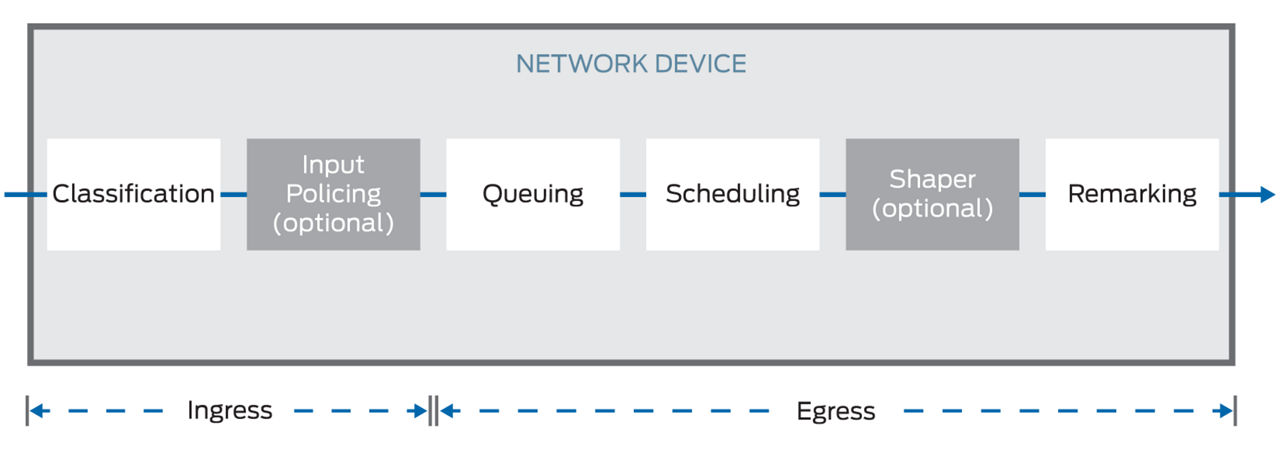What is quality of service?
What is quality of service?
Quality of Service (QoS) is the manipulation of traffic such that a network device, such as a router or switch, forwards it in a fashion consistent with the required behaviors of the applications generating that traffic. In other words, QoS enables a network device to differentiate traffic and then apply different behaviors to the traffic.
Problems That QoS Addresses
Historically, separate physical networks were used to carry voice and data traffic. Each network carried a certain type of traffic and provided the inherent level of quality required by the traffic. Today, these same applications run on converged, packet-based networks where traffic shares a common infrastructure and network resources. These packet-based networks are intended to deliver traffic on a best-effort basis. They have no inherent QoS.
And yet, subscribers of voice and video services demand that these services are always available with acceptable levels of quality. Packet-based networks pass massive amount of traffic from Point A to Point B, and in accordance with service contracts and performance requirements of all the applications generating the traffic. They do it using QoS.
What Can You Do with QoS?
QoS is essential for managing traffic in today’s packet-based networks and includes these capabilities:
- Prioritizing traffic over other traffic based on protocol, address and port number.
- Filtering traffic upon ingress or egress.
- Controlling the allowed bandwidth transmitted or received on the device.
- Reading and writing QoS behavior requirements in the packet header.
- Controlling congestion so that the device sends the highest priority traffic based on scheduler priorities.
- Controlling packet loss using random early detection (RED) algorithms, so that the device knows the packets to drop or process.

How Does QoS Work?
A network device, such as a routers or switch, differentiates traffic as follows:
- It receives packets on its ingress interface, examines the packets, and classifies the traffic into groups called classes of service (CoS).
- If an optional policer is configured, it limits or assigns the traffic to a different class.
- Queues hold packets while they await transmission resources.
- The scheduler takes the packets out of the queues and transmits them in the order configured for the scheduler.
- If there is a shaper configured, it shapes the traffic to the configured shaping-rate.
- If remarking is configured, the device remarks the value of the DS-field of the IP header so that the next device to receive the packet knows how to classify it.
Juniper Networks Implementation
Juniper Networks devices running the Junos OS provide all of the previously discussed QoS behaviors, and more, through the Junos OS Class of Service (CoS) software construct. The Junos OS CoS feature set provides mechanisms for applying QoS behaviors at a very granular level, making it one of the most flexible QoS solutions available today.

